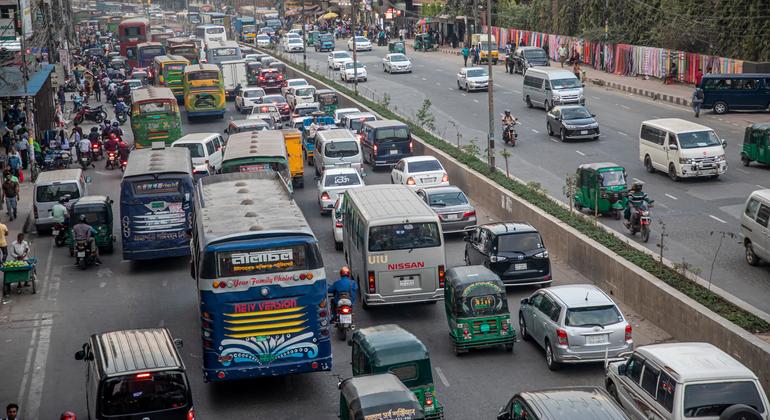More than 2 billion people in cities will face a 0.5°C increase by 2040


“There is hardly any urban resident who will not be affected, with billions of people must endure hotter temperatures or face the risk of flooding and other threats,” speak Anaclaudia RossbachCEO of UN-Habitat.
The report also highlights an important implication funding gap for sustainable urban infrastructure.
Overall, cities need an estimated investment of $4.5 to $5.4 trillion per year to build and maintain climate-resilient systems, but current funding is only $831 billion. billion USD – only a small fraction of the amount needed.
This shortage leaves cities, and especially their most vulnerable populations, exposed to escalating risks.
Impact on the most vulnerable
Ms. Rossbach said that while climate action in cities is not commensurate with the scale of the challenges facing, the people most at risk “are also the people who already face inequality.” persistent and chronic structural inequality”.
“Informal settlements and slums – often located in environmentally sensitive areas and lacking protective infrastructure – often suffer from climate-related disasters or extreme events,” she emphasized.
She added that these vulnerable communities are not only more at risk in the first place, but are also less likely to receive support when a shock occurs.
“Accelerating the transformation of slums and informal settlements, as well as addressing the needs of the most vulnerable territories in cities, is a top priority,” she emphasized.
Narrow green space
The pressure of poorly managed growth has also led to a gradual decline in green space in many urban areas. The average rate in urban areas worldwide decreased from 19.5% in 1990 to 13.9% in 2020..
Even more worrying is the evidence that climate interventions have failed to protect the most vulnerable communities or made their situation worse.
These cases include so-called “green urbanization,” where beneficial measures such as park construction lead to direct displacement of poor households or push up property values, Price them effectively.
emissions dividends
However, despite the complex barriers that cities face amid the growing climate emergency, the report also highlights the importance of considering urban areas as more than just is part of the problem but also part of the solution.
“With bold investments, good planning and design, cities offer enormous opportunities to cut greenhouse gas emissions.adapt to the impacts of climate change and sustainably support urban populations,” the UN said Secretary General António Guterres in the foreword of the report.
He noted that hundreds of cities are “leading the way Expand comprehensive green space, reduce emissions through planning, smart construction and investment in renewable energy to power civil services such as transport networks.”
the The report calls for a clearer urban focus to drive ambitious national commitments, stressing the importance of aligning climate action with broader development goals, such as improving services, upgrading settlements, reducing poverty and public health.




